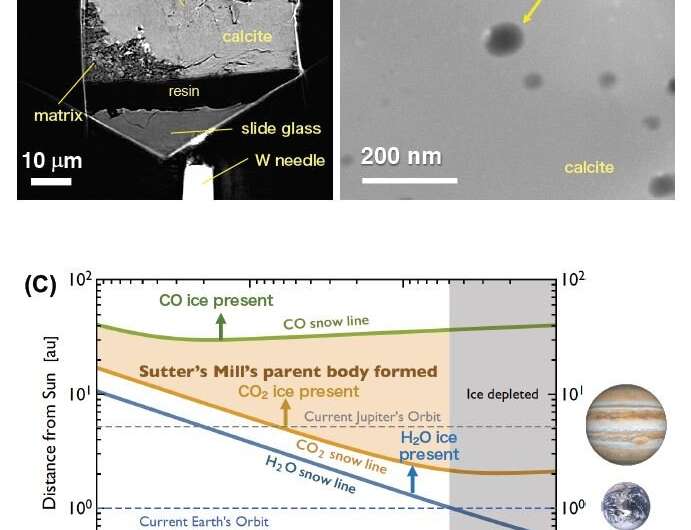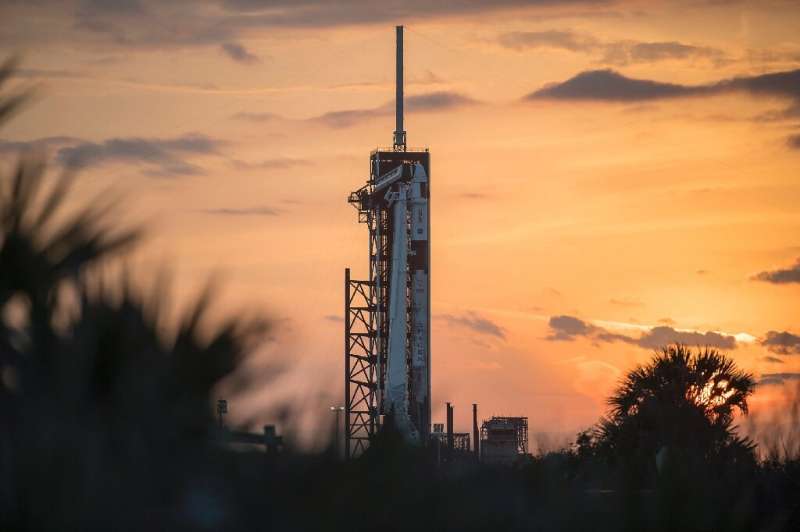Record-breaking flare from Sun's nearest neighbor
Thursday, 22 April 2021 03:38 A team of astronomers including Carnegie's Alycia Weinberger and former-Carnegie postdoc Meredith MacGregor, now an assistant professor at the University of Colorado Boulder, spotted an extreme outburst, or flare, from the Sun's nearest neighbor - the star Proxima Centauri.
Their work, which could help guide the search for life beyond our Solar System, is published in The Astrophysical Jou
A team of astronomers including Carnegie's Alycia Weinberger and former-Carnegie postdoc Meredith MacGregor, now an assistant professor at the University of Colorado Boulder, spotted an extreme outburst, or flare, from the Sun's nearest neighbor - the star Proxima Centauri.
Their work, which could help guide the search for life beyond our Solar System, is published in The Astrophysical Jou Outback radio telescope discovers dense, spinning, dead star
Thursday, 22 April 2021 03:38 Astronomers have discovered a pulsar - a dense and rapidly spinning neutron star sending radio waves into the cosmos - using a low-frequency radio telescope in outback Australia.
The pulsar was detected with the Murchison Widefield Array (MWA) telescope, in Western Australia's remote Mid West region.
It's the first time scientists have discovered a pulsar with the MWA but they believ
Astronomers have discovered a pulsar - a dense and rapidly spinning neutron star sending radio waves into the cosmos - using a low-frequency radio telescope in outback Australia.
The pulsar was detected with the Murchison Widefield Array (MWA) telescope, in Western Australia's remote Mid West region.
It's the first time scientists have discovered a pulsar with the MWA but they believ OneSat Final Design Review successfully achieved
Thursday, 22 April 2021 03:38 Airbus has passed an important milestone for the OneSat flexible satellite product line, with the Final Design Review successfully achieved with customers and space agencies.
The fully reconfigurable OneSat product line features major innovations and disruptive technologies including the latest digital processing and active antennas enabling several thousand beams. In addition, to meet the
Airbus has passed an important milestone for the OneSat flexible satellite product line, with the Final Design Review successfully achieved with customers and space agencies.
The fully reconfigurable OneSat product line features major innovations and disruptive technologies including the latest digital processing and active antennas enabling several thousand beams. In addition, to meet the Lawmakers continue to question Space Command’s move to Alabama
Wednesday, 21 April 2021 22:28
WASHINGTON — U.S. Space Command has close ties to other military space organizations in Colorado, but if it has to move to Alabama it could continue to do its job without major disruption, Gen.
Nelson sails through NASA administrator confirmation hearing
Wednesday, 21 April 2021 22:19
ORLANDO — The Biden administration’s nominee for NASA administrator, Bill Nelson, got a friendly reception from former colleagues on the Senate Commerce Committee during a confirmation hearing April 21 but offered few specifics about how he would run the agency.
Space Development Agency to add more laser links to satellites if the price is right
Wednesday, 21 April 2021 18:25
WASHINGTON — Each of the satellites in the Space Development Agency’s mesh network known as the Transport Layer could have as many as five laser links so they can talk to other satellites, airplanes, ships and ground stations.
Downrange weather delays Crew-2 launch
Wednesday, 21 April 2021 18:00
KENNEDY SPACE CENTER, Fla. — NASA has delayed the scheduled April 22 launch of the Crew-2 commercial crew mission by a day because of weather not at the launch site but at potential abort locations in the Atlantic Ocean.
Optical imagery-focused EarthDaily Analytics emerges from UrtheCast
Wednesday, 21 April 2021 17:19
TAMPA, Fla. — Private equity firm Antarctica Capital has formed a Canadian optical satellite imagery provider called EarthDaily Analytics, after buying parts of UrtheCast that sought creditor protection last year to avoid bankruptcy.
A company official for New York-based Antarctica Capital, which manages more than $2 billion of assets, told SpaceNews it is in talks about buying other businesses in complementary areas.
Scientists find carbon-rich liquid water in ancient meteorite
Wednesday, 21 April 2021 17:00
Space Force pushing procurement reforms but culture change is a slow go
Wednesday, 21 April 2021 16:22
WASHINGTON — The Space Force is standing up a new procurement organization and taking other actions to speed up acquisitions of cutting-edge technology from the commercial space industry. But change won’t happen overnight due to the military’s deeply ingrained culture, said Gen.
Op-ed | Conjunction risk drives need for information sharing
Wednesday, 21 April 2021 14:45
The recent announcement that NASA has entered into discussions with China’s space agency over the sharing of ephemeris data for Mars orbital conjunction analysis is certainly positive and necessary.
SpaceX flight to ISS postponed by one day due to weather
Wednesday, 21 April 2021 13:33
A crewed SpaceX mission to the International Space Station has been postponed by a day due to weather concerns downrange of the launch site, NASA said Wednesday.
Liftoff had been scheduled for Thursday but because of unfavorable conditions along the Atlantic coast, it will now be set for 5:49 am (0949 GMT) Friday.
"For crewed missions we need to look downrange to make sure weather's good for a potential launch escape, and for recovery of the crew," acting NASA Administrator Steve Jurczyk told reporters.
The Crew-2 mission will carry four astronauts in the second routine taxi ride by SpaceX to ISS since the United States resumed crewed space flight, and the first with a European.
SpaceX flight to ISS postponed by one day due to weather: NASA
Wednesday, 21 April 2021 13:08 A crewed SpaceX mission to the International Space Station has been postponed by a day due to concerns over the weather, NASA said Wednesday.
The flight had been scheduled for Thursday but because of an unfavorable weather forecast along the flight path it will now be set for 5:49 am (0949 GMT) Friday, the US space agency said.
A SpaceX rocket is to carry four astronauts to the ISS in th
A crewed SpaceX mission to the International Space Station has been postponed by a day due to concerns over the weather, NASA said Wednesday.
The flight had been scheduled for Thursday but because of an unfavorable weather forecast along the flight path it will now be set for 5:49 am (0949 GMT) Friday, the US space agency said.
A SpaceX rocket is to carry four astronauts to the ISS in th 23 April: watch Mission Alpha launch live
Wednesday, 21 April 2021 11:30
Latest: NASA and SpaceX now are targeting 23 April at 10:49 BST (11:49 CEST) for the launch of the Crew-2 mission to the International Space Station due to unfavourable weather conditions along the flight path on Thursday.
French ESA astronaut Thomas Pesquet is returning to the International Space Station on his second spaceflight. The mission, which is called Alpha, will see the first European to launch on a US spacecraft in over a decade. Thomas is flying on the Crew Dragon, alongside NASA astronauts Megan McArthur and Shane Kimbrough, and Japanese astronaut Aki Hoshide.
24 April: watch Mission Alpha docking live
Wednesday, 21 April 2021 11:30
French ESA astronaut Thomas Pesquet is returning to the International Space Station on his second spaceflight. The mission, which is called Alpha, saw the first European to launch on a US spacecraft in over a decade. Thomas is flying on the Crew Dragon, alongside NASA astronauts Megan McArthur and Shane Kimbrough, and Japanese astronaut Aki Hoshide.
